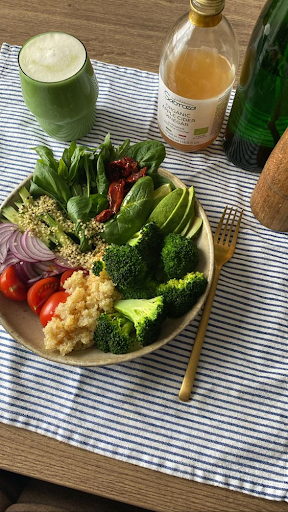Healthy Eating on a Budget: How to Eat Well Without Breaking the Bank
Eating healthy on a budget is a challenge many face, especially as grocery prices continue to rise. However, maintaining a nutritious diet without breaking the bank is entirely possible with some strategic planning and smart shopping choices. This blog post will provide practical tips for eating well while saving money, including affordable grocery options and effective meal planning strategies.
## Understanding the Importance of Healthy Eating
Healthy eating is essential for overall well-being, influencing everything from energy levels to disease prevention. A balanced diet rich in fruits, vegetables, whole grains, and lean proteins supports physical health and mental clarity. However, misconceptions about the cost of healthy food often deter individuals from making nutritious choices. With the right approach, you can enjoy a variety of wholesome foods without overspending.
## Tips for Maintaining a Nutritious Diet on a Budget
### 1. Create a Meal Plan
Meal planning is one of the most effective ways to save money and ensure you eat healthily. Here’s how to get started:
- **Plan Your Meals**: Dedicate time each week to plan your meals. Focus on recipes that use similar ingredients to minimize waste.
- **Make a Grocery List**: Based on your meal plan, create a detailed grocery list to avoid impulse purchases.
- **Batch Cooking**: Prepare larger quantities of meals that can be portioned out for lunches or dinners throughout the week. This not only saves time but also reduces food waste.
### 2. Shop Smart
Where and how you shop can significantly impact your grocery bill. Consider these strategies:
- **Choose Affordable Grocery Stores**: Stores like Aldi, Winco Foods, and Grocery Outlet often offer lower prices on staple items compared to larger supermarkets[3][4].
- **Buy Store Brands**: Opt for store brands instead of name brands, which are usually cheaper and often just as good in quality[1][4].
- **Shop Midweek**: Grocery stores typically restock their shelves midweek and may offer discounts on items that didn’t sell over the weekend[1].
### 3. Focus on Affordable Staples
Certain foods are both nutritious and budget-friendly. Incorporate these staples into your diet:
- **Grains**: Brown rice, oats, and whole grain pasta are affordable sources of carbohydrates that provide energy and fiber.
- **Legumes**: Beans (dried or canned), lentils, and chickpeas are excellent sources of protein and fiber at a low cost[2][6].
- **Frozen Vegetables**: Often cheaper than fresh produce, frozen vegetables retain their nutrients and can be used in various dishes.
- **Seasonal Produce**: Buying fruits and vegetables that are in season can save you money while ensuring freshness[6]. For example, carrots, potatoes, and bananas are typically inexpensive year-round.
### 4. Utilize Coupons and Discounts
Take advantage of coupons and discounts to further stretch your budget:
- **Digital Coupons**: Many grocery stores offer digital coupons through their apps or websites. Use these to save on items you already plan to buy[1].
- **Cashback Apps**: Apps like Ibotta provide cashback offers on groceries purchased at participating stores[1].
### 5. Prepare Simple Recipes
Cooking at home is generally more economical than dining out or buying pre-packaged meals. Here are some simple recipe ideas:
- **Rice and Beans**: A classic combination that is not only filling but also provides complete protein when combined[6].
- **Vegetable Stir-Fry**: Use frozen vegetables with rice or noodles for a quick meal.
- **Omelets or Frittatas**: Eggs are an affordable protein source; add leftover vegetables for a nutritious meal.
## Sample Budget Grocery List
Here’s a sample grocery list based on affordable staples that can help you maintain a healthy diet while staying within budget:
| Item | Estimated Cost |
|-------------------------|----------------|
| Brown rice (2 lbs) | $1.64 |
| Dried beans (1 lb) | $1.50 |
| Eggs (2 dozen) | $5.40 |
| Frozen mixed vegetables | $2.50 |
| Whole grain pasta (1 lb)| $1.84 |
| Canned tomatoes (2 cans)| $2.00 |
| Spinach (fresh or frozen)| $2.00 |
| Bananas (1 bunch) | $2.00 |
| Chicken thighs (2 lbs) | $6.00 |
| Peanut butter (16 oz) | $3.00 |
Total estimated cost: approximately $27.38
## Conclusion
Eating healthy on a budget is achievable with careful planning, smart shopping, and creativity in the kitchen. By focusing on affordable staples, utilizing coupons, and preparing meals at home, you can nourish your body without overspending. Remember that small changes can lead to significant savings over time—so start today by creating your meal plan and shopping list! With these strategies in hand, you'll be well on your way to enjoying nutritious meals while keeping your finances intact.
Citations:
[1] https://www.goodhousekeeping.com/health/diet-nutrition/a40619434/cheap-groceries-list/
[2] https://www.littlehouseliving.com/cheap-grocery-list.html
[3] https://homecookedroots.com/cheapest-grocery-stores/
[4] https://www.rd.com/list/budget-grocery-list/
[5] https://www.reddit.com/r/budgetfood/comments/15wq2v2/whats_the_cheapest_grocery_list_possible_in_terms/
[6] https://food.ubc.ca/your-guide-to-affordable-grocery-staples/
[7] https://www.cleaneatingmag.com/clean-diet/6-nutrient-packed-drinks/
[8] https://www.medicalnewstoday.com/articles/323947


Comments
Post a Comment